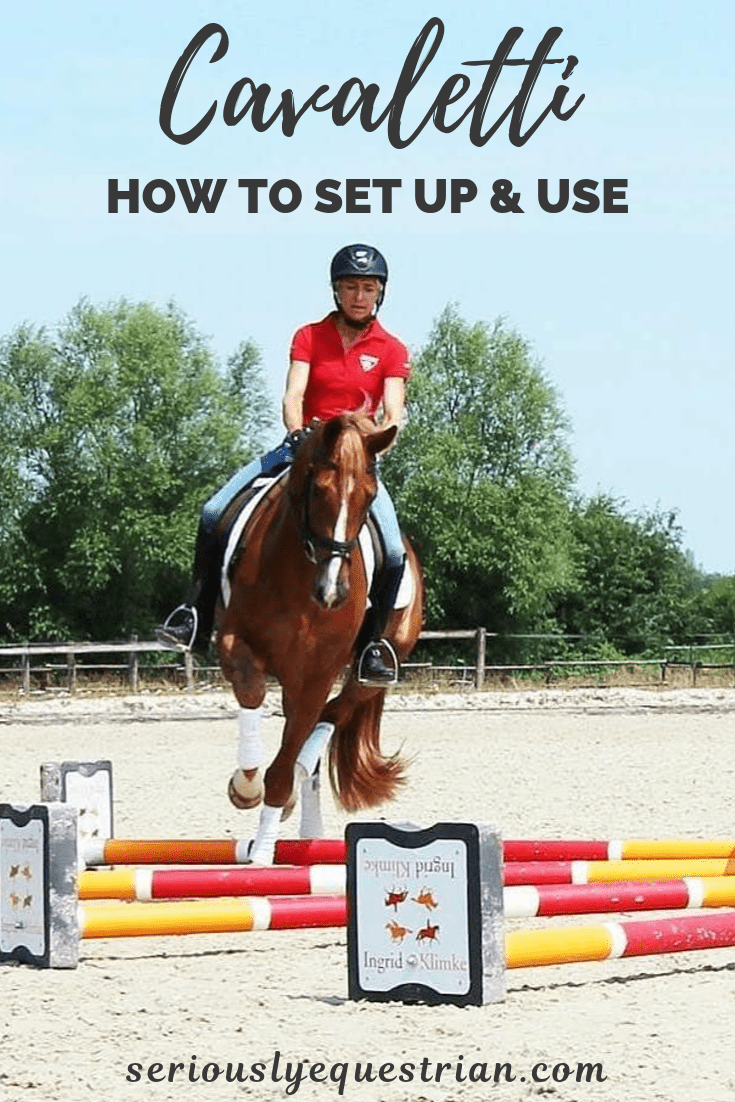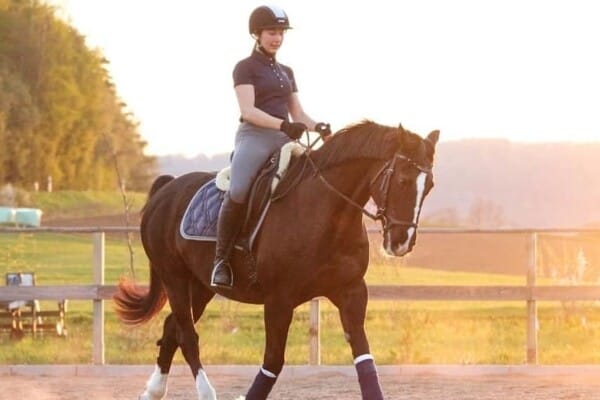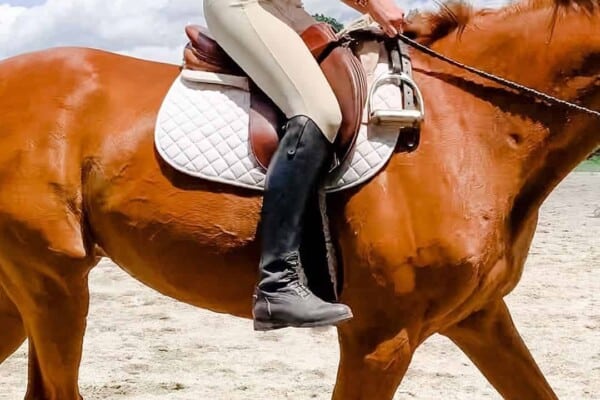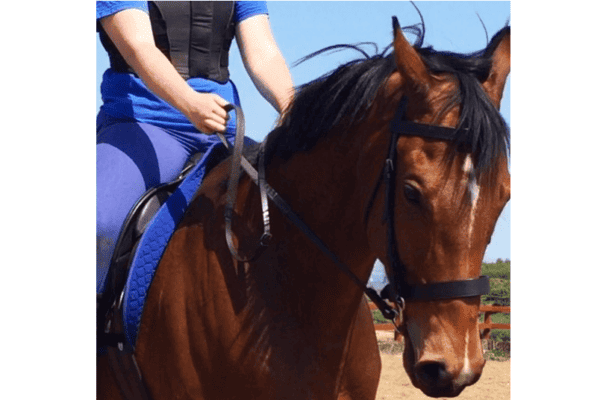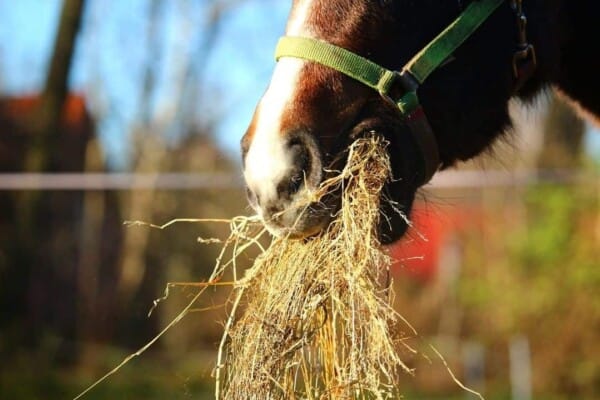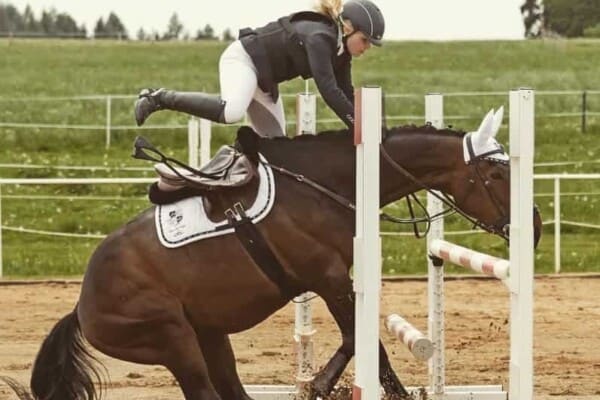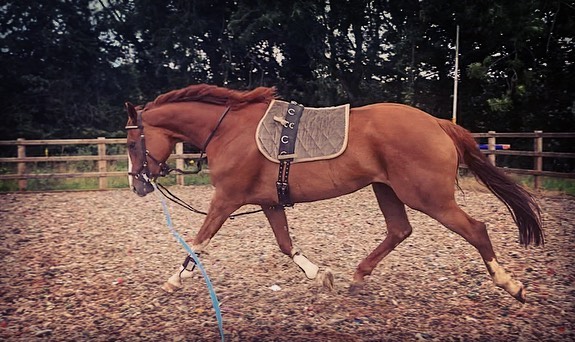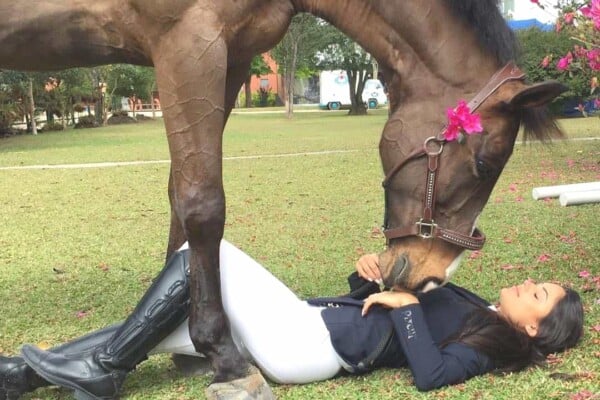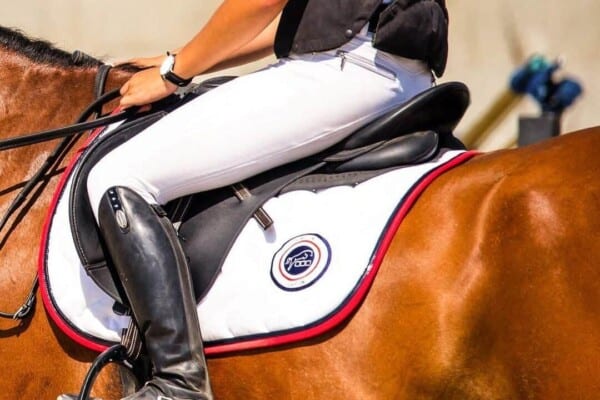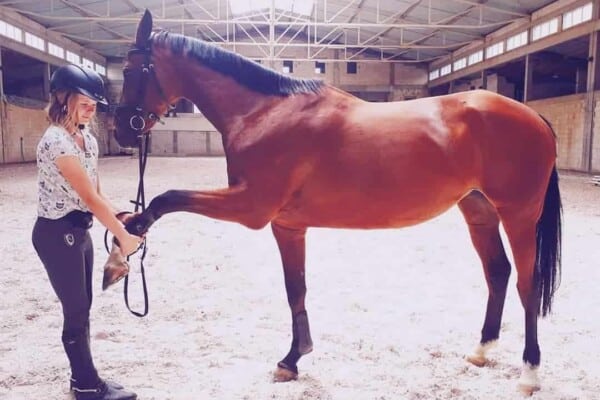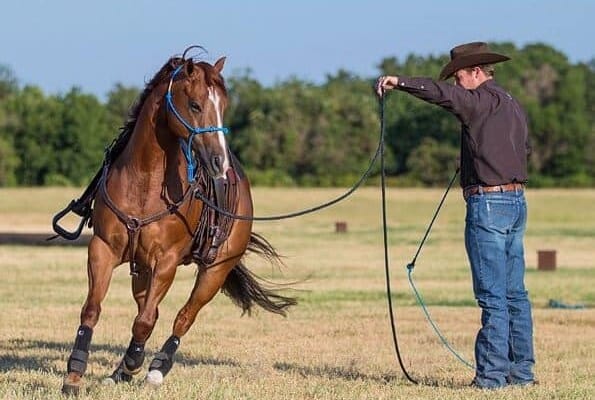Derived from the Italian word, cavaletto, which means ‘little horse’, Cavaletti are small wooden jumps consisting of a fixed pole anchored at each end by an X frame. X——–X
Have Cavaletti fallen out of fashion?
With the arrival of modern materials and the Poly block, riders quickly started to favour, lightweight plastic blocks which offered a range of jump heights and did not need rubbing down and repainting every year. Poly blocks became the new kid on the block and were heralded as being much safer than cavaletti. But Polyblocks are not all they are cracked up to be. The main drawback is the deep recesses in which the jump poles sit.
For safety, a pole that is struck by a horse’s hoof, should always bounce and fall straight down to the ground otherwise it risks becoming entangled in the horse’s legs and travelling with him, which can cause the horse and rider to fall. Take a look at the flat safety cups at any affiliated British Show Jumping competition. Polyblocks have a choice of height options, the lowest of which is not as low as a cavaletti and the highest around 90cm.
It is not safe to jump a fence of that height with a pole set into a deep well. When they are knocked, the whole fence falls to the ground including the blocks.
Who invented cavaletti?
Cavaletti were invented by Federico Caprilli, an Italian Cavalry Officer who was mainly famous for developing the forward jumping seat. He established that the horse struggled with the weight of the rider over the fence if the rider sat on the horse’s back remaining upright or even lent backwards. His invention was ridiculed by many who described him as looking like, ‘a monkey up a stick’. However, he knew a thing or two and his research developed what we now recognise today as the forward jumping seat.
Caprillii designed cavaletti to encourage the horse to learn how to adjust his stride, to work gymnastically and develop suppleness. A regular feature on the yard of the late great German Olympian, Reiner Klimke, his daughter Ingrid still uses them in the training programmes of her international dressage horses and eventers.
The Klimkes advocate the use of them so strongly that they even wrote a whole book just about Cavaletti entitled ‘Cavaletti: For Dressage and Jumping’ now in its fourth edition.
The advantages of Cavaletti
Cavaletti is designed to be very low; if you turn them over you can adjust the height depending on how the X sits on the ground. They offer the flexibility of both a very small jump – the lowest height is about 30cm high – and a raised trotting pole on their lowest height setting.
Trot poles should be square so that if the horse nudges or kicks them then they cannot roll. Most people use round poles which are designed to be suspended off the ground as part of a show jump. They can often move which is both dangerous and frustrating if you are schooling on your own as you have to dismount to put them back on the correct distance.
Cavaletti double up as both stable, slightly raised trotting poles and very low fences. They are ideal for training exercises for both flatwork and jumping.
What are the correct distances for cavaletti?
Working on a 16hh horse, you want to aim for the following distances:-
Walk – 2 feet to 2.5 feet apart
Trot – 3.5 feet to 4 feet apart
Canter – 9 feet to 11 feet apart
This is working on one stride in the particular gait in question. Although all fence heights are in meters and centimeters, many people use imperial measurements, so feet, for stride patterns as a canter stride, is comfortably around 12 feet and this multiplies up very nicely for longer distances. You can learn how to walk a three-foot stride quite easily. Remember these measurements are a working average and you will need to adjust them depending on the size of your horse, his average length of stride and, what you are trying to achieve with the exercise. If you want to be precise, you can use a wheel. With cavaletti on a curve or half circle, the distance is usually taken at the middle point of each obstacle and remains the same.
How can cavaletti help the rider to develop?
Cavaletti are really useful in the early stages of light seat work and jumping for an aspiring rider. They can be used in grid format or set up as a low very inviting course of fences which teach the rider to look ahead and change direction.
The level of difficulty may be commensurate to rider ability with Olympians like three day eventer,Ros Canter, regularly using cavaletti within the arena environment – small, inviting obstacles which develop rapid rider response skills and the requirement from the horse to change direction or adjust stride length without the pressure of large fences or the buzz of the competition atmosphere. Cavaletti are also excellent for small but challenging accuracy tests and for perfecting straightness and riding a line.
Cavaletti are used most effectively to improve the horse’s gaits by developing suppleness, rhythm and cadence, essentially the lightness and quality of the step.
Dos and Don’ts with cavaletti
- Always start with one cavaletti before you introduce multiples in a line or on a curve even with an experienced horse
- Never stack cavaletti one on top of another to make a large fence, this is wholly unstable and the horse risks entrapment if he drops a leg and it becomes caught
- Don’t forget you can use cavaletti to mark out dressage arenas instead of white boards or to define lines and corridors within the arena for in hand or mounted accuracy work
- Gymkhana – cavaletti are endlessly versatile for children and can be incorporated into their lessons in lots of different and fun ways
Cavaletti are hugely multi-purpose and perform a variety of functions for riders of all levels across the main disciplines. Portable but sturdy, keep them near the arena or your riding field, you will be amazed at how useful they are.



